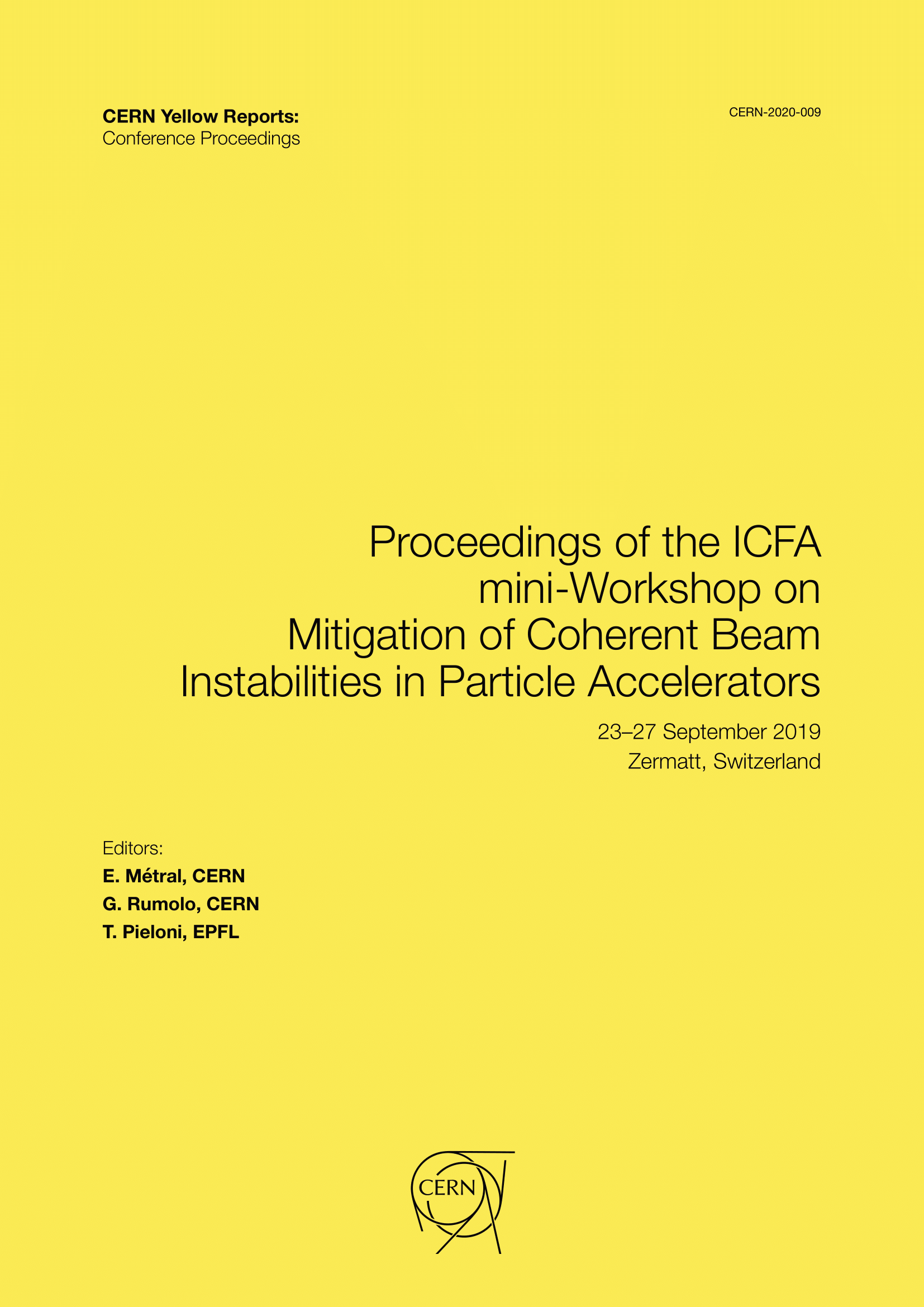Active methods of suppressing longitudinal multi-bunch instabilities
DOI:
https://doi.org/10.23732/CYRCP-2020-009.197Abstract
Longitudinal multi-bunch instabilities limit the beam intensity and quality reach of hadron synchrotrons. In case the impedance source driving the instability is well known, for example an RF cavity, active feedback can be set up locally to reduce its effect on the beam. For multi-bunch instabilities excited by other impedances, global feedback systems are needed. A combination of both types is required to produce the high intensity beam for the future High-Luminosity LHC (HL-LHC) in the CERN Proton Synchrotron (PS). All RF cavities at 10 MHz, 20 MHz, 40 MHz and 80 MHz involved in the generation of LHC-type beams are equipped with direct, wideband feedback. To achieve an impedance reduction beyond their electrical stability limit, they are complemented by local 1-turn delay and multi-harmonic feedback systems. Additionally, a global coupled-bunch feedback loop operating in the frequency domain with a Finemet cavity as longitudinal wideband kicker damps all possible dipole oscillation modes. Beam measurements in the PS are presented, highlighting the key contributors needed to stabilize the highest intensity beams for the LHC.
Downloads
Published
Issue
Section
License
Copyright (c) 2021 CERN

This work is licensed under a Creative Commons Attribution 4.0 International License.
Authors who publish with this publication agree to the following terms:
- CERN retains copyright and publishes the work licensed under the Creative Commons Attribution License 4.0 that allows others to share the work with an acknowledgement of the work's authorship and initial publication in this series.
- Authors are able to enter into separate, additional contractual arrangements for distribution of the published version of the work (e.g., post it to an institutional repository or publish it in a book), with an acknowledgement of its initial publication in this series.
- Authors are permitted and encouraged to post their work online (e.g., in institutional repositories or on their website) prior to and during the submission process, as it can lead to productive exchanges, as well as earlier and greater citation of published work (See The Effect of Open Access).

